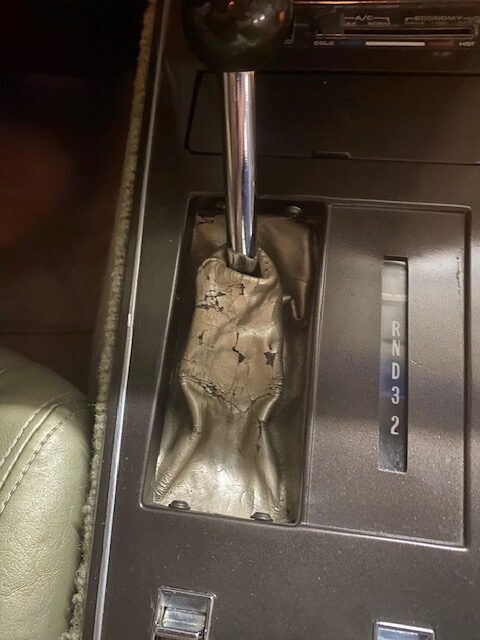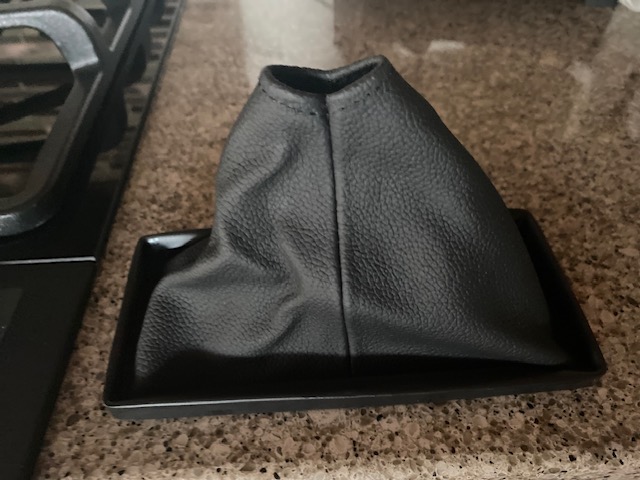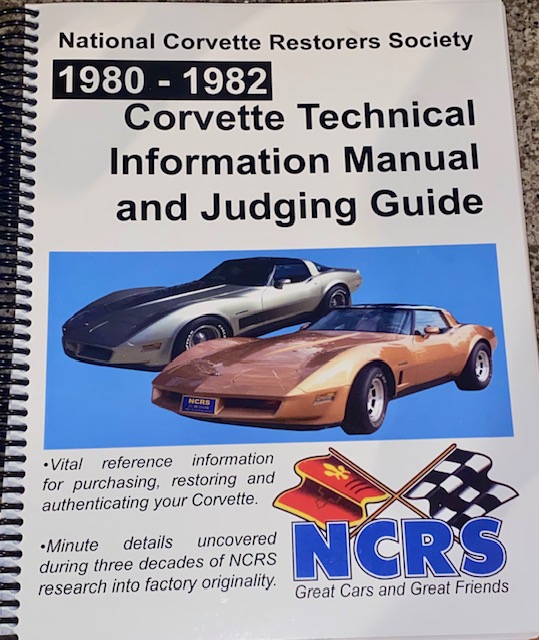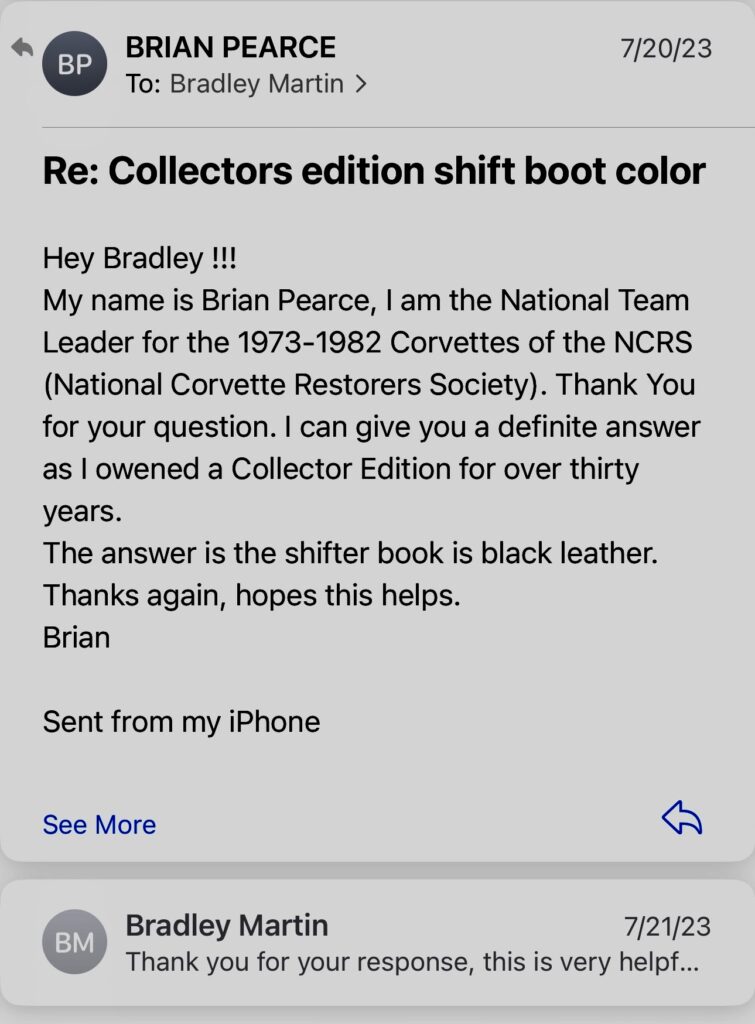
My son Bradley is now in his second month of ownership of his 1982 Collector’s Edition Chevrolet Corvette. His immersion into the world of Sharks continues.
For 1980-82 third-generation Corvettes, the National Corvette Restorer’s Society has a judging and restoration manual that has well over 300 pages. With SCMer and NCRS Senior Judge Michael Pierce as his mentor, he is wrestling with viewing this car through the “as-delivered” mantra of the NCRS.
Pierce and Bradley had barely started evaluating the interior when they hit a roadblock. The shift boot on his car is silver, and badly worn. It very much detracts from an otherwise presentable cockpit.
A quick internet search turned up replacement boots in several colors, including a “Collector’s Edition” silver. That must be the one, wouldn’t you think?
However, when we turned to page 31 of the NCRS manual, in section 8 of the interior criteria, the manual was clear: All Collector’s Edition shift boots were black.
We bought the car from Chip Starr, the owner of Race Car Resurrections in Portland. He was sure the boot should be silver. And the boot in the car looked original.
But once we had started down this path of curated rehabilitation, there was no going back.
Bradley fired off an email to the 1973-82 NCRS National Team Leader, Brian Pearce, asking about the boot. He responded immediately: “Hey, Bradley! Thank you for your question. I can give you a definitive answer, as I owned a Collector’s Edition for over 30 years. The answer is that the shifter boot is black leather. Thanks again, hope this helps.”
We now have a black boot in hand and Chip will install it.
What intrigues me about this process is the definitive, “take-no-prisoners” approach to “as-delivered” condition.
Concours judging is one of the most contentious segments of the collector car world. There are many approaches, with proponents of each often thinking (often proclaiming) that theirs is the best.
I have no opinion on the superiority of various judging techniques (French vs. points vs. authenticity vs. JCNA vs. Ferrari Red Book…). To each their own.
But what I do enjoy about the NCRS process, especially for a someone like Bradley who is just being introduced to car evaluation, is the absolute black-and-white guidance NCRS provides.
The manual says the boot is black, so black it is. in addition, as he was examining the engine compartment, he determined from the manual that the wiper motor had been replaced. It was the wrong shape and missing its stampings, but the reservoir was original. All part of the information gathering process.
My son’s relationship with cars of any kind will never be the same.
I am enjoying sitting in the peanut gallery and watching the show.





Welcome to the asylum. Down here, we all float.
For a vehicle built for profitable mass production in the early 1980’s, the proper mindset is that it SHOULD have a certain component in a given color. I wouldn’t be surprised if Bradley’s C3 left Bowling Green with a red boot – and I’ve seen odder manufacturing miscues that made it past final inspection after 33 of reporting on cars.
It’s wonderful that Bradley is getting this aspect (NCRS process) in his classic sports car experience, and actually likes it!
“ I am enjoying sitting in the peanut gallery and watching the show. ” is even better reward for dad.
Show judging is not part of my world, but I do understand why it’s an important segment of the hobby. Where can I get a short explanation of French Judging Technique ?
My car-judging criteria:
1) Style, in the French manner, including form, color, trim
2) Engineering and technical advances: what’s new, Pussycat?
3) Success? Was the car a success in the showroom or on the track, etc.
4) Individual history: good story, provenance
5) Car I’d Most Like To Drive Home: Stolen from Peter Egan
I owned a 70 Corvette coupe for 30 years . I sold the Corvette to my nephew who was at a Judged show . The judges were not convinced that the tail light on the 70 was original as the taillight was stamped 69 SAE . I explained tat 1970 production was delayed as a result of a factory strike . There was another 70 corvette being judged. We all walked over and the judge was surprised the tail light showed the same SAE markings . So much for the experts they can only know what they think is correct. Best wishes to Bradley and Keith , enjoy your ride !
I think the French Judging Technique is when the judges go on strike just before the event.
I stopped judging at Porsche Club events after four decades. Too many situations like Stu described with the 1970 Corvette taillight. Once the “recognized expert” on a specific model decides something is correct, then that becomes the Gospel when it’s not necessarily true – especially with 356 and early 911/912’s.
It’s a shame the “Factory Correct” police have taken most of the fun out of car show judging.
As a result, I rarely go to any cars shows anymore. 😒
I retired from twenty five years at the company with the blue oval. In these years there were many times when substitute pieces were used, mainly due to parts supply issues. One particular time, we ran out of tan carpets for the floor. Black was all they could supply us with. Black carpets were installed. While not a common practice, it does happen.